#weimar berlin
Text

Voo Doo, a German trans woman cabaret owner and performer with her beloved boa. (Date unclear: likely 1912-1928.) [source]
14K notes
·
View notes
Text
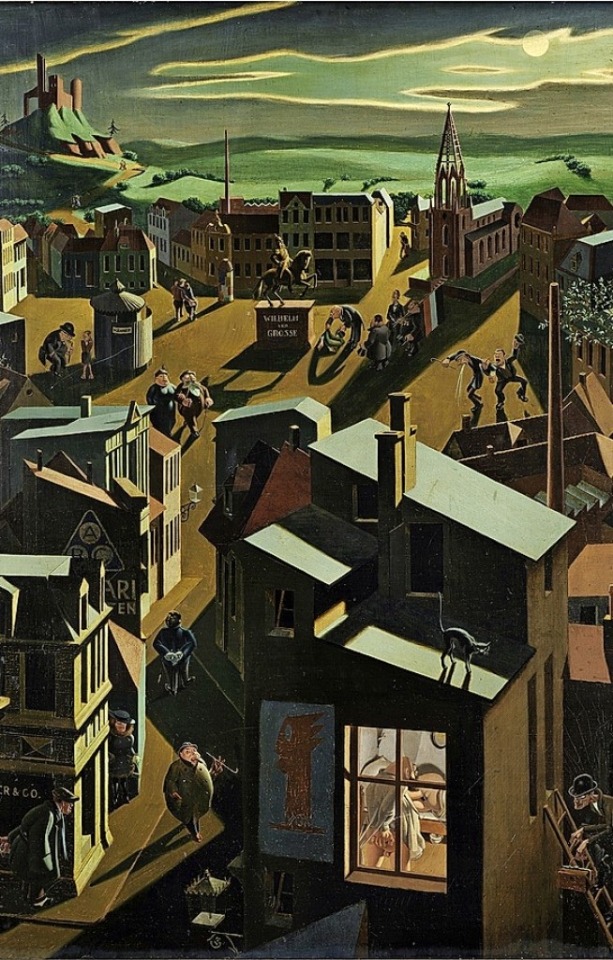
Georg Scholz, Deutsche Kleinstadt bei Nacht, 1923
#Georg Scholz#new objectivity#neue sachlichkeit#weimar republic#modern art#1920s berlin#weimar berlin#1920s painting#magic realism#modernism#babylon berlin#voyerurism#spooky#German village#1920s Germany
172 notes
·
View notes
Photo

Fascinating cover of Berliner Leben, Issue 24, 1921
179 notes
·
View notes
Text
Some stuff about queer culture in Weimar Berlin
Note: Das Institut für Sexualwissenschaft does not have a definitively used translation from what I see -- have seen Institute of Sexology (my preferred translation), Sexual Science, Sexual Research, Sexual Knowledge etc. It’s all the same place.
any further suggestions, feel very welcome to add!
*
ONLINE:
the wikipedia for the institute: yeah, yeah it’s wikipedia, but get some groundwork done here if you know nothing at all, so the next set of recommendations don’t overwhelm you
Remembering Dora Richter, One of the First Women to receive Gender-Affirming Surgery: good introduction to the Institute of Sexology, with a focus on one of the women who lived, worked, and received care there
On the Clinics and Bars of Weimar Berlin: a more in-depth article about the institute, some of the people who sought to get support via it, and the surrounding culture of the time
The Magnus Hirschfeld Society: a lot of their work is published online, in German, French, and English. Hours of fun.
Interview with the author Laurie Marhoefer: discussing his book (mentioned below) Sex and the Weimar Republic, which focuses on various fronts to sexual liberation in the Weimar Republic, including the limitations of assimilationist approaches*
*Marhoefer is currently working on their third book centred on queer persecution during the Third Reich, which “centrally analyzes racism as a vector of persecution,” so that’s something to keep an eye out for too
The Asian Canadian gay activist whose theories on sexuality were decades ahead of their time: an article about Li Shiu Tong, by Marhoefer, who also wrote a book about him (see below). The title really says it all
The Transvestite Magazine of Weimar Berlin: a series of magazines that were published until 1933 when the crackdown on queer rights resulted in the destruction of the Institute of Sexology, featuring examples of voices almost completely overlooked -- transvestites who were simply living their lives
The Institute for Sexualwissenschaft: this blog post goes into something I’ve been thinking as well -- the parallels between the anti-queer/anti-trans violence perpetuated by the German government before, during, and after the Nazis and the anti-queer/anti-trans rhetoric and violence today. Where would we be if all that research had survived? (and luckily, some of it has!)
*
BOOKS
Der Liebe und Dem Leid: Das Institut für Sexualwissenschaft 1919-1933: a recent German historical account of the institute of Sexology that I desperately want to get my hands on
Sex and the Weimar Republic: German Homosexual Emancipation and the Rise of the Nazis: explores intersectional fights for queer emancipation during the Weimar Republic and its limitations
Racism and the Making of Gay Rights: A Sexologist, His Student, and the Empire of Queer Love: goes deeper into the story of Li Shiu Tong, who was an impressive researcher at the institute and whose contribution to sexual and gender philosophies is being reconsidered at the moment!
Magnus Hirschfeld: The Origins of the Gay Liberation Movement: a biography of Magnus Hirschfeld and his central role in the queer liberation movement of the time
The Masculine Woman in Weimar Germany: looks at the depictions of women who didn’t conform to standard gendered and sexual expectations from 1918-1933 and explores their role to understand gendered lives and experiences at this point in German history
The Hirschfeld Archives: Violence, Death, and Modern Queer Culture: a book I desperately want to read on anti-queer violence in the early 20th century, focusing on the Institute of Sexology and its destruction, which has gathered archival material from “over a hundred published and unpublished books, articles, films and photographs.”
Gay Berlin: Birthplace of a Modern Identity: another broader book about Berlin. I’m interested in the subtitle “birthplace of a modern identity” as potentially exploring the ways Berlin was the centre of explorations that despite the Nazis best efforts are still alive and -- with setbacks -- remembered today
Queer Identities and Politics in Germany: A History, 1880-1945: Idk what to tellya it’s about queer identities and politics in Germany between 1880-1945
*
ISHERWOOD
British author Christopher Isherwood spent some time in Berlin, notably including a stay at the Institute of Sexology. This time resulted in “The Berlin Stories,” as well as a section in “Christopher and his Kind” (his autobiography).
These stories were turned into the play+film “I Am A Camera” and the musical+movie “Cabaret”
The 1993 Alan Cumming and Jane Horrocks Cabaret (one of my favourite things in the world)
Opening of the 1972 movie
(according to a 1977 biography of Isherwood, he denounced the Berlin Stories in a 1956 essay: “He regretted depicting many persons as "monsters" and noted they were "ordinary human beings prosaically engaged in getting their living through illegal methods. The only genuine monster was the young foreigner who passed gaily through these scenes of desolation, misinterpreting them to suit his childish fantasy."” -- that being said, the people in those books are still very, very interesting and -- despite Isherwood’s initial limitations/biases -- beautiful in their realities)
*
OTHER MOVIES
Anders als die Andern and Laws of Love -- two movies produced via the institute exploring same-sex relationship rights. I haven’t seen the latter yet (it was only restored in 2021, nearly a hundred years after it was released), but it was heavily censored. The former (with the famous German actor Conrad Veidt as a lead) is considered the first movie to overtly show homosexuality. They’re both on the Internet Archive
The Einstein of Sex: Life and Work of Dr. M. Hirschfeld: by cult film-maker Rosa von Praunheim that explores the opening of the institute up until the 30s. I haven’t seen it yet, but very excited! EDIT: currently watching and it’s definitely On A Budget, but a good rundown of Hirschfeld’s life. On youtube with english subs. EDIT 2: having finished it, am interested in how it portrayed Dora Richter (that it had her in it at all was great) -- not completely accurate, but a labour of love
Paragraph 175: a 2000 movie documenting some of the gay men who experienced the violence of the law under Nazi regime and afterwards. This film is simply made, and there aren’t many men featured in it -- it feels like it’s trying to get the story told before they lost their chance completely. The stories are very brutal. It starts pre-war. One of the men talking is the French author Pierre Seel, who lived until 2005 and received recognition as a holocaust survivor in 2003, in part due to this film and his own memoir
Great Freedom: this actually takes place post-war, but another insight into what Paragraph 175 was. the main character was in a concentration camp, but it’s not depicted. I simply think it’s good, although it’s mildly off-topic.
*
MISC
this has focused a lot on the Institute of Sexology, but I’d like to read some works on Helene Stöcker and the World League for Sexual Reform
#resources#queer stuff#queer resources#weimar berlin#magnus hirschfeld#li shiu tong#laurie marhoefer#heike bauer#paragraph 175#die institut für sexualwissenschaft#weimar germany#cabaret#christopher isherwood#queer history#queer germany#germany#queer literature#queer non-fiction#queer cinema
164 notes
·
View notes
Text
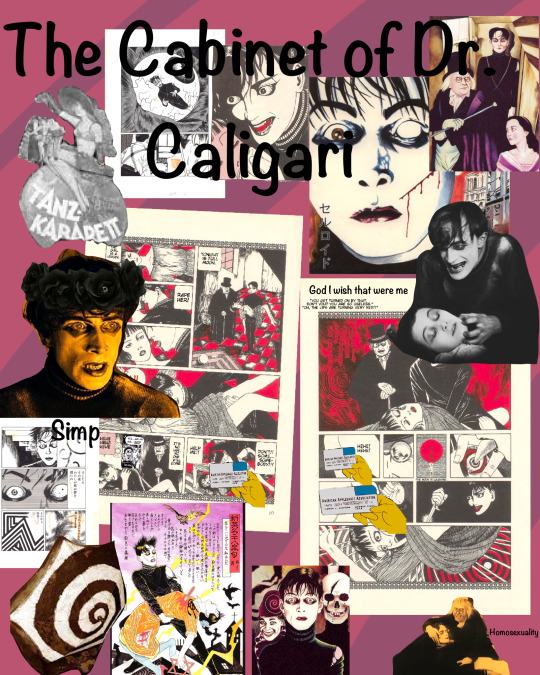
Legit forgot I made these
#mine#cesare the somnambulist#the cabinet of dr. caligari#conrad veidt#gothic horror#silent films#german expressionism#old hollywood#classic hollywood#vintage hollywood#vintage#cinema#old cinema#visual journal#gothgoth#gothic#gothic aesthetic#suehiro maruo#manga#weimar berlin#20s aesthetic#1920s cinema#1920s#weimar
102 notes
·
View notes
Text
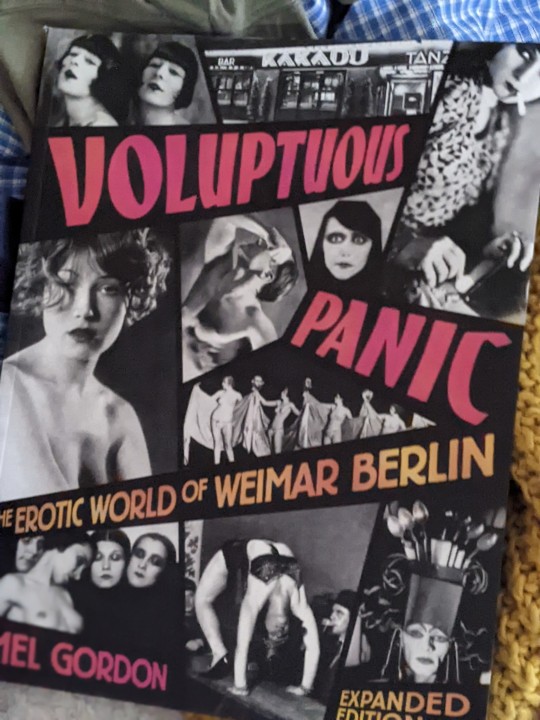

I have two new books.
One of them has a lot more dicks than the other.
It's probably not the one you think it is.
#bookworm#weimar Berlin#weimar#berlin#history#queer history#gay history#queer culture#roaring twenties#currently reading#reading#books#bookblr#this is all for research#definitely#lgbt history#new york city#germany#german history
89 notes
·
View notes
Text
So I've been thinking about OFMD and piracy as a metaphor for queerness/queer culture.
I'm sure many others have mentioned it, but I think the flag in "Our Flag Means Death" has a double meaning: a pirate's flag as well as a nod to the modern queer flags, since being queer/trans can be a death sentence for many.
The :"age of piracy" coming to an end reminds me of the outrageously queer culture of Weimar-era Berlin, which effectively ended when the Nazis took over in the early 1930's.
Gays. lesbians, trans people, cross dressers, and everyone in between seemed to thrive in Weimar Berlin, just as they seem to on the high seas in OFMD.
The increasing threat of the British navy would obviously be the stand-in for the Nazi takeover in this reading.
One could also apply this metaphor to today's world and particularly the USA, where a queer renaissance in media and increasing awareness of gender.and sexuality diversity over the past 10-15 years clashes with a strong conservative backlash that fights to restrict and criminalize the queer community.
#i may be giving david jenkins too much credit lmao#anyway these were my shower thoughts#enjoy!#ofmd meta#ofmd#weimar berlin#our flag means death#ofmd analysis#lgbtq media#lgbtqiia+#lgbtq community#queer media#transgender#trans#queer culture#piracy as queerness#lgbtq
30 notes
·
View notes
Text



Gerd Katter, his gender certificate signed by Magnus Hirschfeld and his transvestite passport issued by the police based on Hirschfeld's certificate.
The certificate says:
"The patient Eva Katter, born on March 14, 1910, residing in Berlin-Britz Muthesiushof 8, known personally, is in clinical terms a transvestite. To maintain her mental well-being and her ability to work, it is necessary that she is enabled to wear clothing of the male gender, which corresponds to her nature."
The passport says:
“The worker Eva Katter, born on March 14, 1910, and residing in Britz at Muthesiushof 8, is known here as someone who wears male clothing.”
Gerd Katter remained an admirer of Hirschfeld throughout his life and donated these documents (among others) to the Magnus Hirschfeld Society in 1985.
These documents are from 1928, which is a few years after Hirschfeld coined "transsexualismus" but as we can see here, he was still using "transvestite" to describe what we'd understand as a trans man. This may just been because the term was more widely understood, or maybe the distinction was considered quite technical at the time.
#trans history#transvestites#gender certificates#gender passports#weimar berlin#misgendering cw#20th century
86 notes
·
View notes
Text

Professor Magnus Hirschfeld with Tao Li, his student and companion in 1932.
15 notes
·
View notes
Text

found this on pinterest bc i was watching a documentary with my mom on the lgbtq+ community under N@z! occupation
Read this if interested, i highly recommend this article
#lgbtq+ community#weimar berlin#1920s#1930s#history#queer history#lesbian#gay#transgender#bisexual#cabaret#drag
5 notes
·
View notes
Text
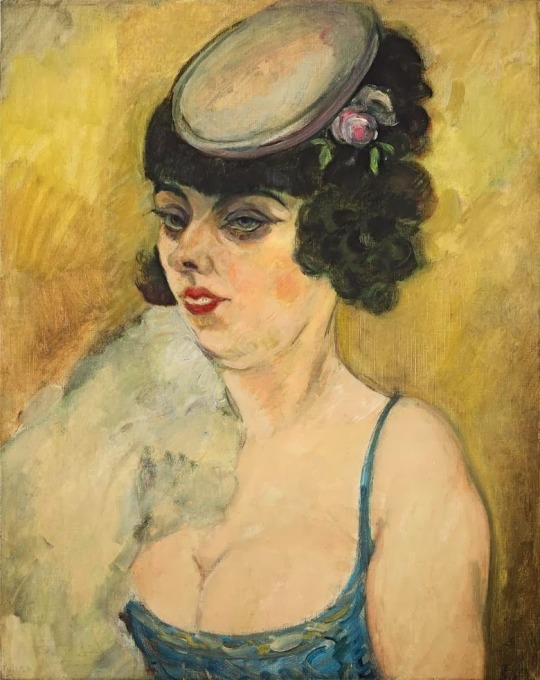
Georg Tappert, Frau mit gelbem Hütchen (Ausschnitt), c. 1925. Oil, paper, on canvas, 59 x 47 cm, Sammlung Frank Brabant
VG Bild-Kunst Bonn
#Georg Tappert#neue sachlichkeit#new objectivity#weimar republic#painting#1925#oil painting#modernism#realism after modernism#1920s realism#verism#babylon berlin#modern art#1920s berlin#weimar berlin#1920s painting#magic realism
42 notes
·
View notes
Text
Religion in Weimar Berlin
Brian Britt, author of Religion Around Walter Benjamin, discusses religious practices in Weimar Berlin and the personalities that led them.
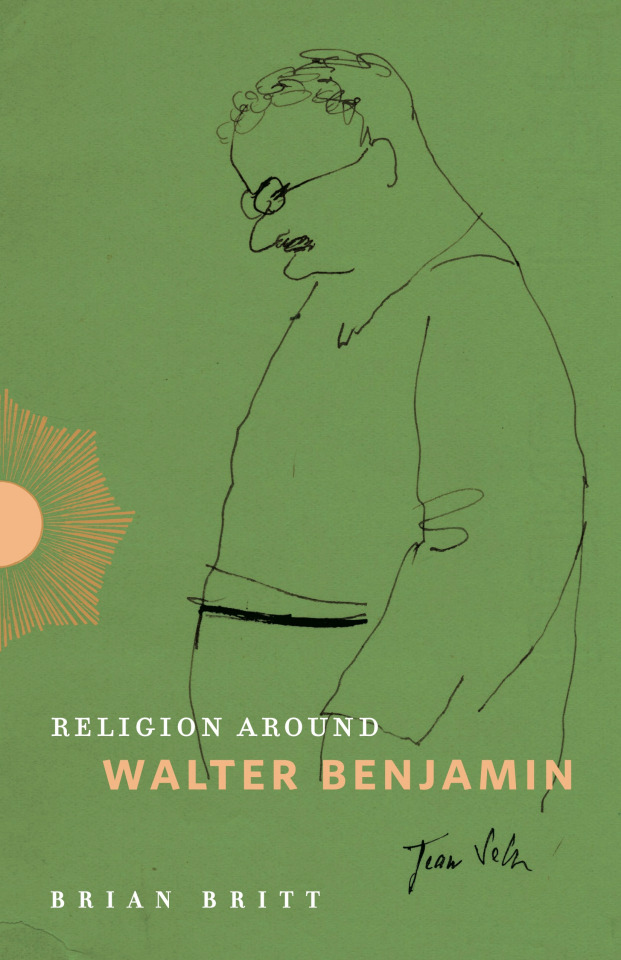
When most of us think of Weimar Berlin, we picture cafes, cabaret, and artistic experimentation in a vibrant, volatile metropolis. But Berlin was also a center of dynamic religious communities. Berlin’s Catholic and Jewish minorities grew especially quickly in the early decades of the twentieth century, and these largely working-class groups became lightning rods of Germany’s political and religious upheaval.
When I began researching Religion Around Walter Benjamin, I could find very little scholarly discussion of religion in Berlin, so I consulted primary sources in archives across the city, where I learned was that many of the city’s best known personalities were religious leaders, like the priest Carl Sonnenschein, a social reformer who advocated for working-class Catholics, and the charismatic preacher Christoph Blumhardt, who drew thousands to his religious gatherings and later held office as a member of the Social Democrats. Annual public conventions of Protestants and Catholics drew tens of thousands, and the holidays of Christmas and Easter permeated the entire city with outdoor markets, performances, and special sales at the city’s glittering department stores.
When the defeat of World War I brought the collapse of the close bond between Protestant church and state, political struggles often made political affiliation more important than religious practice. For working-class Catholics and Jews, the choice between a secular left and a Christian nationalist right made life difficult or even dangerous. During Weimar, the predominantly Catholic Center Party often cooperated with the Social Democrats and criticized anti-Semitic nationalists who killed Walther Rathenau, the county’s Jewish foreign minister, in 1922, but by 1933 the party had thrown their support to the Nazis.
During all this upheaval, Berliners maintained basic religious observances in high numbers, and religious identity continued to shape their lives and life chances. Walter Benjamin’s upper-middle class Jewish family celebrated Christmas and Hanukkah in Berlin as the turmoil of war, collapsing empires, and modern life led to the Nazi regime that would destroy most of Europe’s Jews, including Benjamin himself. Religion Around Walter Benjamin shows how institutional religion and the religiosity of political and cultural life of Berlin provide a necessary but overlooked dimension of one of the twentieth century’s greatest thinkers.
Religion Around Walter Benjamin is now available from Penn State University Press. Find more information and order the book here: https://www.psupress.org/books/titles/978-0-271-09333-8.html. Save 30% with discount code NR22.
#Religion#Religious Studies#Walter Benjamin#Germany#Weimar Berlin#Jewish Studies#German Studies#Religious History#Twentieth Century#Penn State University Press#Books#New Books#Book
4 notes
·
View notes
Note
Hiii! This question is kinda apropos of nothing but I’m curious: who is the person in your profile pic? Every time I scroll past it a little too fast I think it’s Alan Alda/Hawkeye haha
no worries (i think alan alda would be honoured, if i remember correctly, he mentioned meeting him once as a kid in his memoir). it's this fellow:


his name was conrad veidt, a famous german actor of the weimar republic, later escaped to britain and then the us to get away from the nazis with his jewish wife, Ilona Prager. he also starred in two pro-jewish films shortly after the nazis came to power in 1933 (the wandering jew, and jew süss, but i confess i haven't watched these yet, so i cannot say how well they aged) -- generally did a few films that were about Social Issues that came down on the side of the oppressed, including the woman's crusade, and the merry-go-round, as well as... (see below)
famous for some very important movies:
1. played the lead in the first movie to openly portray gay men (anders als die andern), which was produced by magnus hirschfeld and the institute of sexology in a bid to get support for legalising homosexuality -- it's free on youtube! also 105 years old, can you believe...
2. played the somnambulist in the cabinet of dr caligari, and generally was every vamp-girls/boys dream back in the day, playing in a lot of the german expressionist films and proto-horror films, and generally not afraid to play offbeat, uncomfortable roles that weren't about being an attractive leading man (eerie tales, the hands of orlac, waxworks, the man who laughs)
3. after he moved to the us, he was very happy to portray nazis to give them realism, and he plays major heinrich strasser in casablanca in 1942 (his second-last film)
i believe he was in a total of 115 films, but quite a few of them between when he started in 1917 and 1930 are lost (der januskopf, i think of you often....murnau, bela lugosi, and conrad veidt, in an adaptation of jekyll and hyde??? arghhh)
other fun facts, did occasionally crossdress and in fact this may have contributed a little to his first divorce, as his wife found him and a bunch of his friends wearing dresses one night after she came back from work -- notably conrad was in her new dress. she told a friend that this was the breaking point, but it may have partially been a joke. they did divorce though
was also at one point called the prettiest girl in berlin in print, good for him
was probably bisexual, although having said that i've actually never read why people think this -- so for now, he was a mensch and a great ally to a lot of people, a little on the queerer side in all things
i do follow a fair few conrad veidt blogs on here, but i don't talk about him often, it's one of those "am a fan, but keeping it mostly to the chest" kind of things with him -- however, as you can tell, very happy to give the Info when asked!
that's the man, the girl, the pretty boy: mr conrad veidt!
#conrad veidt#really i ought to get a book on him to fill in the gaps in my knowledge#a lot of the time im happy to just chill with what i know and different articles but.. i like a good book#weimar republic#weimar berlin#anders als die andern#queer history#queer cinema#cabinet of dr caligari#casablanca
14 notes
·
View notes
Text
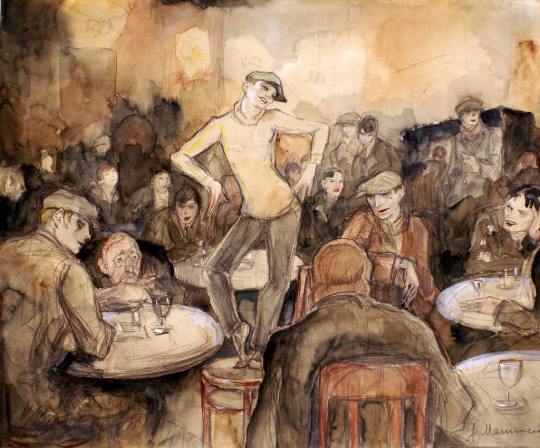
Tranvestitenlokal (1931) — scene at an unspecified trans bar in Berlin, painted by Jeanne Mammen
22K notes
·
View notes
Text

160 notes
·
View notes
Photo


berlin-wannsee station // berlin wannsee
architect: richard brademanns
completion: 1928
when you visit berlin-wannsee station, you feel like you've stepped right back into the twenties. the station is very well preserved and well worth seeing. and a starting point into a very oppressive and dark, historical environment which, with the memorial and educational site haus der wannsee konferenz (house of the wannsee conference), sheds light on the human crime of the shoa which was finally initiated here with the wannsee conference.
#berlin#wannsee#berlin wannsee#architecture#architecture photography#photography#richard brademanns#weimar republic#expressionism#expressionistic architecture#design#railway station#railway station architecture#germany#typography#wannseekonferenz#haus der wannsee konferenz
141 notes
·
View notes